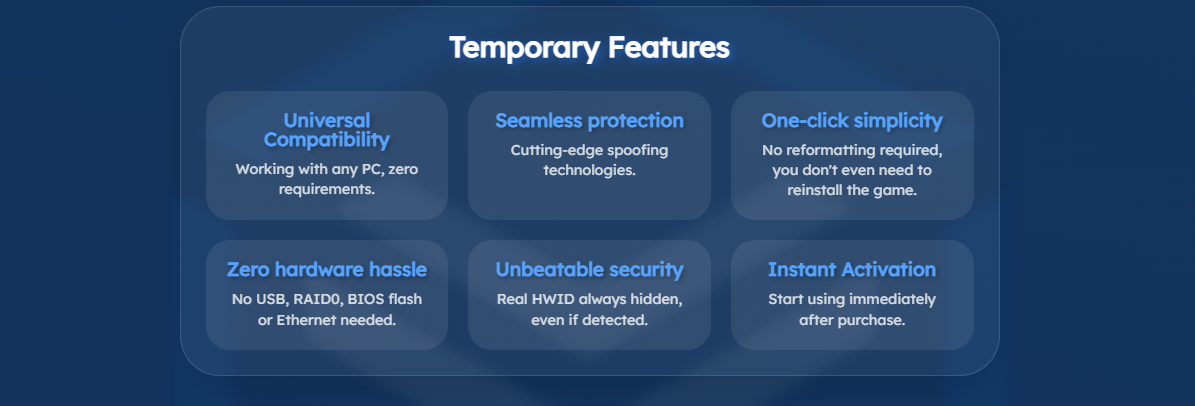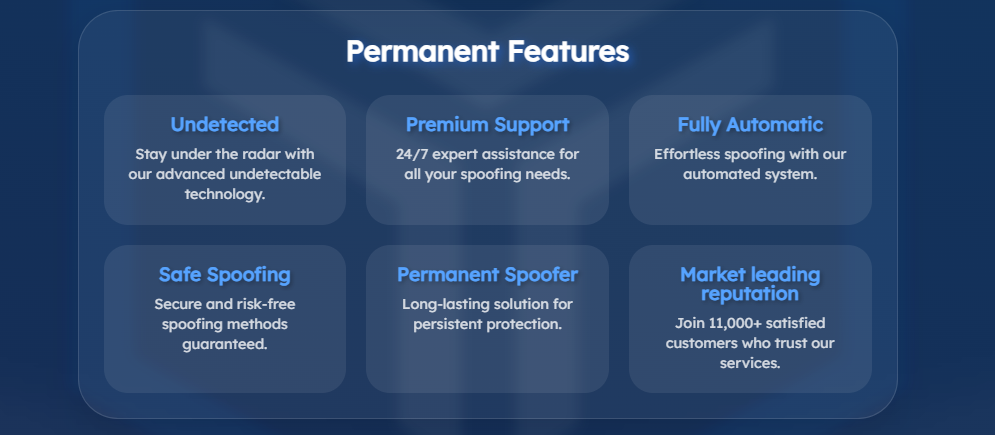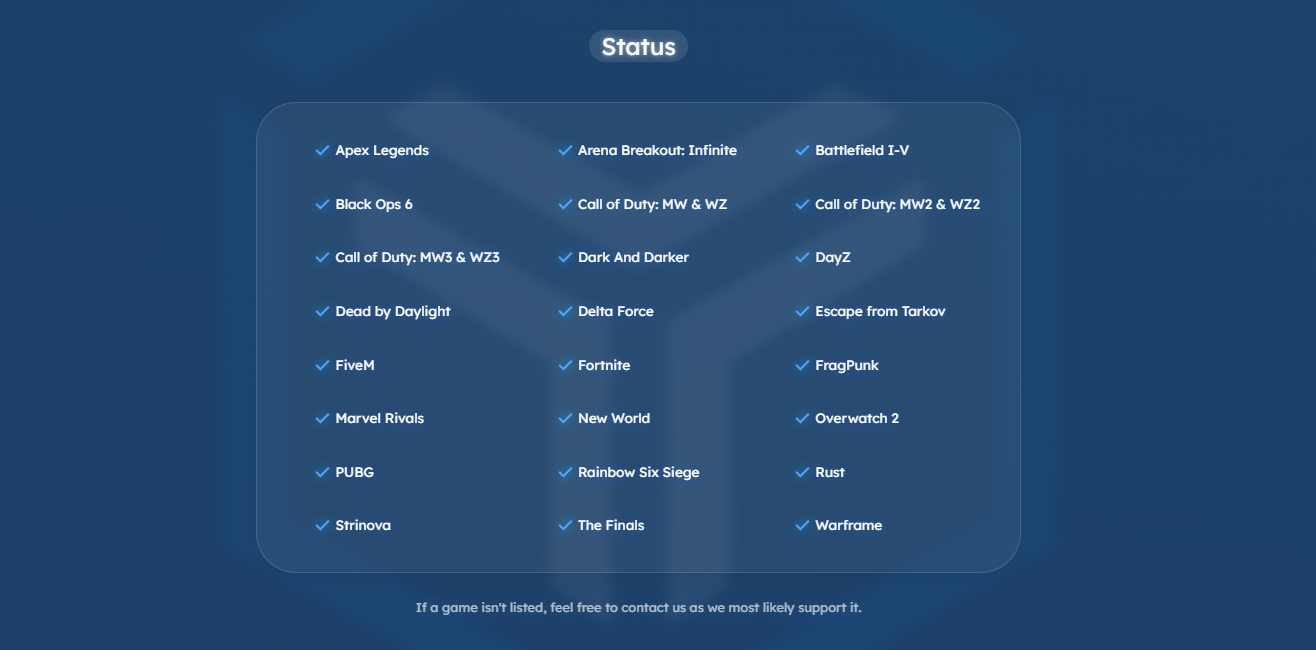If you’ve ever found yourself banned from a game because of your hardware, you’ve probably heard about HWID spoofers. These tools are designed to help you get around hardware bans by changing how your computer is identified.
Using an HWID spoofer gives you a shot at protecting your privacy and slipping past some of the tougher anti-cheat systems that don’t care if you just make a new account. Lots of gamers turn to spoofers when the usual tricks just don’t cut it, especially with games that have really strict security. That said, you should know using these tools isn’t without risks, and it might break the rules of whatever game you’re playing.
Sync.top is often seen as the best HWID spoofer out there—mainly because it’s reliable, fast, widely compatible with all PC hardware, and gets updated regularly to work with the most popular games.
What Is an HWID Spoofer?
An HWID spoofer is basically a piece of software that changes your computer’s unique hardware identifiers. People usually use it to dodge bans in online games or to keep their hardware ID private, away from prying eyes.
Definition and Purpose
HWID stands for Hardware ID. It’s just a unique code made up of info from your computer parts—think motherboard, hard drive, GPU, or network adapter. Sites and games use this to keep tabs on your device.
A spoofer (like an HWID spoofer) lets you mask or swap out this code. If you get banned and your HWID is blocked, these tools help you generate a new hardware ID. That way, you can get back into games or platforms that locked out your real hardware ID.
Some folks use HWID spoofers for privacy, others just to get around device bans. It’s a bit of both, honestly.
How HWID Spoofing Works
When you fire up an HWID spoofer, it changes the info your computer sends out about its hardware. It can swap serial numbers or other IDs for things like SSDs, CPUs, or your network card. Some spoofers even randomize these numbers every time you start up.
Here’s a quick look at what’s usually spoofed:
| Hardware Part | Possible Spoofed Value |
|---|---|
| Motherboard | Serial Number |
| Hard Drive | Volume or Serial Number |
| GPU | Device ID |
| Registry, Traces, Unique identifiers | Keys & IDs |
After these tweaks, you’ll look like you’re on a totally different computer—even though you’re not. Some advanced spoofers change a bunch of IDs, HWIDs, and a bunch of other stuff at once, which is handy for better protection or if you’re really trying to dodge a ban.
Types of Spoofers
There are a few flavors of HWID spoofers out there.
Temporary vs. Permanent Spoofers
There’s also a split between temporary (temp) and permanent (perm) spoofers.
Temporary spoofers only change your HWID for your current session. Once you restart, your original hardware ID comes back. They’re easy, and if you want to just play for a bit and then go back to normal, they’re a safe bet.

Permanent spoofers keep your HWID changed until you manually revert things or reinstall your system. These are good if you need to stay under the radar for a while—like after a ban—but they can be a pain to undo if you mess something up. Always follow the instructions, or you might run into system headaches.

Some spoofers let you pick between temp and perm modes, so you can choose what works best for you.
Pick the type you need based on what you’re trying to do and how long you want the change to stick. Some spoofers work with tons of games, while others are a bit more picky.
Why Are HWID Spoofers Used?
HWID spoofers are used for a few reasons—mostly in online gaming or for testing software. People usually want to get around hardware bans, protect their privacy, or, if they’re developers, do some testing.
Bypassing Hardware Bans
Lots of online games go for hardware bans (or HWID bans) to get rid of cheaters or people breaking the rules. Instead of just banning your account, they ban your computer’s unique hardware ID. So if you try to make a new account on the same PC, you’re still out of luck.
An HWID spoofer helps you get around these bans by changing (or “spoofing”) your hardware ID, making it look like you’re on a different device. It’s a way back in, even if your old hardware was blacklisted. But heads up—using a spoofer to get past a ban is almost always against game rules. If you’re caught again, the consequences are usually the same. (you get banned again)
Enhancing Privacy in Gaming
HWID spoofers can also help with privacy. Some games and anti-cheat programs collect hardware details to keep track of you. Stuff like your motherboard or hard drive serial numbers can get logged.
When you use a spoofer, you change those hardware IDs. That makes it tougher for companies to link your new accounts to your old ones or to your personal info. For some people, that extra layer of privacy really matters—especially if staying anonymous is important or if you just don’t want your gaming history following you everywhere.
Testing on your own games/applications
If you’re a developer, HWID spoofers are a handy tool for testing your own games or apps. Maybe your software uses hardware IDs to limit free trials or for licensing.
Using a spoofer, you can see how your system handles different hardware IDs. It’s a good way to make sure things work for new users or on different setups, and it helps you catch bugs before real users do.
Honestly, if you want to do real-world testing without a bunch of extra devices, a spoofer is pretty much essential.
HWID Spoofers and Anti-Cheat Systems
Modern anti-cheat systems do more than just look for obvious cheats.
Understanding Anti-Cheat Technologies
Anti-cheat tools like Easy Anti-Cheat (EAC) keep an eye out for suspicious software and odd behavior. Some of the bigger online games rely on these systems, and they do some pretty deep hardware scans.
Staying undetected is the name of the game, but anti-cheat updates drop all the time. If you want to keep ahead, you’ll need a spoofer that’s updated just as often—and maybe a bit of luck, too.
Detection Methods
Most anti-cheat systems use a mix of software and hardware checks. They’ll scan for weird processes, sketchy files, or changes in your system setup.
For hardware bans, anti-cheat programs log HWIDs from a bunch of components—disk, CPU, GPU, network adapters, even peripherals. If your banned HWID shows up again even for a split second, you’re flagged instantly.
Some companies, even use kernel-level drivers to look for unauthorized changes deep in your system. Over time, that makes basic spoofers less useful.
If you want to avoid detection, you need an advanced HWID spoofer like Sync.top.
Choosing an HWID Spoofer
If you’re thinking about getting an HWID spoofer, it’s worth slowing down and checking out what each option actually offers. The right tool can keep your gaming smooth (well, as smooth as it can be under the circumstances) and help you dodge bans—at least for a while.
Free vs. Paid Solutions
Yeah, there are free HWID spoofers floating around online, but they’re kind of a gamble. Most free ones don’t get regular updates, so they can be buggy, unreliable, or even unsafe. You probably won’t get much support, and the instructions (if there are any) can be confusing or flat-out wrong.
Paid HWID spoofers usually step things up a notch. You get better security, more frequent updates to stay ahead of anti-cheat changes, and actual customer support if you hit a snag.
Is it worth paying for? That’s up to you, but it’s something to consider.
Whatever you choose, do your homework. Look for providers like us ^^ with solid reviews and feedback on different rating platforms, and forums.
Key Features to Look For
The best HWID spoofer for you is one that actually works with the games you play. Check if it supports your favorite titles and main platforms. Reliability matters—a lot. You want something that’s kept people undetected for a while, not just a week.
Regular updates are a must. Game developers are always tweaking anti-cheat, so your spoofer needs to keep up. It’s also way nicer if the install process is simple, with clear steps, so you’re not stuck scratching your head for hours.
Good customer service can save your bacon if things go sideways. Look for sellers who offer help via email, Discord, or support tickets. Bonus points for backup and restore features, so you can undo changes if things don’t go as planned.
Sync.top HWID Spoofer Features & Pricing
Sync.top HWID Spoofer gives you a few different ways to change your hardware ID, making it trickier for games or software to keep you out. It supports all PC hardware and a bunch of popular games—though heads up, it doesn’t work with Valorant or League of Legends.
You can pick between permanent changes (which stick around after a restart) or temporary ones that last until you reboot your PC. Sync spoofer plays nice with anti-cheats like Anti-Cheat Expert(ACE), XIGNCODE3, Battlestate Games(BSG), NetEase, BattlEye, and EAC which is handy.
There’s even a custom Discord bot to walk you through setup, so you’re not left guessing. If you run into trouble, our support team is there 24/7 (or so they say).
You will also find comprehensive video and written tutorials to guide you through the whole process.
The advanced features, extensive compatibility with different hardware and games, professional support, and fair pricing, make Sync.top widely known as the best HWID Spoofer currently available in market.
Don't take our words for it, check out the countless positive reviews of satisfied customers around the world.
Pricing Options:| License Type | Price (EUR) | Duration |
|---|---|---|
| 15-Day Temporary | $19.99 | 15 Days |
| 30-Day Temporary | $29.99 | 30 Days |
| 90-Day Temporary | $74.99 | 90 Days |
| Lifetime Temporary | €349.99 | Lifetime |
| One-Time Permanent | $29.99 | One Use |
| Lifetime Permanent | $99.99 | Lifetime |
| Temp + Permanent Bundle | $399.99 | Lifetime |


Supported Games by Sync.top HWID Spoofer
Sync.top HWID Spoofer works with almost every single game available right now. That means, that even if your game is not listed below we most likely support it. If you are unsure, feel free to contact us and ask if we support your favorite game.

- Apex Legends
- Black Ops 6
- Call of Duty: WZ3
- Call of Duty: MW3
- Dead by Daylight
- FiveM
- Marvel Rivals
- PUBG
- Strinova
- Arena Breakout: Infinite
- Call of Duty Modern Warfare
- Call of Duty: Warzone
- Dark and Darker
- Delta Force
- FN
- New World
- Rainbow Six Siege
- The Finals
- Battlefield
- Call of Duty: MW2
- Call of Duty: WZ2
- DayZ
- Escape from Tarkov
- FragPunk
- Overwatch 2
- Rust
- Warframe
- Gorilla Tag
- VrChat
- and more!
Frequently Asked Questions
How can I change my Hardware ID (HWID)?
You can change your Hardware ID (HWID) by using HWID spoofers or HWID changer tools. These programs modify your hardware-related identifiers, such as those linked to your hard drive, motherboard, or network adapter. Some HWID spoofers work automatically, while others may require manual setup. Always choose reputable tools and follow instructions carefully to avoid system issues.
Is it legal to modify your system's HWID?
Changing your system’s HWID (Hardware ID) is not illegal in most countries. However, using an HWID spoofer or changer to bypass software restrictions, cheat in online games, or violate terms of service can lead to your account being banned or suspended. Always review the terms of service for any software or game before using an HWID spoofer, as violating those rules may result in penalties even if it isn’t against the law.
What methods are used to spoof a HWID effectively?
Common methods to spoof a HWID (Hardware ID) include changing registry values, using specialized HWID spoofer software, modifying hardware information, or installing custom drivers. Some HWID spoofers target specific components—such as the hard drive, motherboard, or network adapter—while more advanced tools can spoof multiple hardware IDs at once for a more thorough result. Always be cautious and use trusted software to avoid damaging your system.
Can anti-cheat systems detect HWID spoofers?
Yes, many modern anti-cheat systems are designed to detect HWID spoofers and similar tools. While some HWID spoofers attempt to avoid detection, advanced anti-cheat technology can still identify suspicious activity or unauthorized changes to hardware IDs. Using a spoofer always carries the risk of detection, which can lead to account bans or other penalties.
What should I consider before using a HWID spoofer?
Before using a HWID spoofer, consider the serious risks involved. There is a chance you could download malware, get flagged or banned by anti-cheat systems, or even damage your operating system. Some HWID spoofers have been known to mess up important system settings or deactivate Windows, causing major issues. Always download HWID spoofers from trusted, reputable sources—never use the first tool you find online. Make sure you fully understand the risks and always follow safe practices.
How do I prevent a permanent ban in online games with HWID spoofing?
There is no guaranteed way to avoid a permanent ban in online games when using a HWID spoofer. Anti-cheat systems are constantly improving and can often detect spoofing, even with the most reputable or up-to-date tools. If you choose to use a HWID spoofer, always follow the game’s rules as closely as possible and use trusted, regularly updated spoofers. However, understand that there is always a risk of detection and ban—no method is completely safe. Make sure you’re fully aware of the consequences before proceeding.
